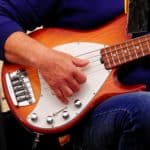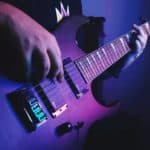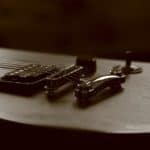The tone of your bass guitar is a relevant feature. Once you learn how to play, you’ll want to learn how to sound.
The direction you’ll take most probably will depend on your favorite music genre.
For some is metal, for others punk.
For you, maybe, is funk.
So, what if you want to play funk, but don’t know how to do it?
There is a great amount of information to consider before starting. However, the short answer is simple:
The way to get a funky bass tone is by understanding its timing and technique. While choosing the proper bass, amp or gear does make a difference, the best you can do is practice and get the feel for it. Learning how to slap, pop, mute the strings, and in a more high level, how to groove is of the essence.
Still, believe you got what it takes to play funky? You probably do!
The mastering of funk begins with this:
Forget about gear, start with your hands
As we mentioned, the only thing you need for playing funk is yourself (besides a bass, of course!)
After all, technique and timing are pretty much everything. Gear, and pickups, and amp settings are details that are better left for later.
You might wonder “Where do I begin?”
You can start by mastering the slap technique, one step at a time. There is no hurry.
In case you don’t know, slapping consists of hitting the strings against the instrument’s neck.
Considering that slapping is one of the main features of funk, getting it right is highly important.
Of course, slapping is not the only thing you can practice.
Funk and disco contain a lot of “double notes” (or 16ths). You can work on this technique by repeatedly playing a set of notes and gradually increasing speed.
No need to tell you, your fingers will burn out… but it’s worth the effort!
If you are a bass player who prefers picks, then you ought to cover almost all of it up on your hand.
This means to hit the string with just a tiny part of the pick. The less you see it, the better.
This helps provide a strong sound, without being unnecessarily aggressive.
Lastly, we recommend you play approximately an inch and a half away from the bridge.
When muting with your palm, the higher up you play from the bridge, the more radical the result.
Funky bass guitars
You conquered the basics, but you are so ambitious that you still want a good bass guitar.
We like your attitude.
The key characteristic here is versatility. A versatile bass is a point in favor because it allows playing a wider catalog of styles.
This is perfect considering that most music genres are not in isolation.
In other words, one finds other genres or influences within any style.
Funk is no exception. It involves soul, jazz, and blues.
Therefore, a versatile instrument adapts quickly to this hybrid of a style.
Now, let’s dive deeper. Which are exactly the very best options for playing funky?
Most people agree with one of these two:
- Fender JazzBass
- Musicman Stingray
Other honorable mentions are Fender Precision, Musicman Sterling, and Cort B4 Plus.
Both Stingray and JazzBass allow playing songs from Red Hot Chili Peppers and Jamiroquai, to Michael Jackson and KC and the Sunshine Band (again, versatility).
Flea, for instance, plays with a Musicman Stingray (check either “Aeroplane” or “Coffee Shop” music videos).
Paul Turner of Jamiroquai chooses the same.
For a Fender JazzBass, we can mention Flea (again!), Jermaine Jackson (The Jackson 5), and Verdine White (Earth, Wind & Fire).
Lastly, we are aware that the models mentioned above are not necessarily cheap. A quality instrument costs money!
Hence, we want to provide a list with more affordable options, and here they are:
- Squier Classic Vibe 60s Precision Bass IL 3
- Ibanez GSR200B Gio
- Yamaha TRBX174
Active or passive pickups?
The way in which string vibrations turn into sound waves makes the difference. That is to say, the distinction between an active pickup and a passive pickup is important.
However, it is not THE most important aspect.
To be more specific, either active or passive works for funk.
Of course, you are a Gear Aficionado, and you want to examine this topic thoroughly.
On the one hand, active pickups are great for getting an aggressive tone. Bold growls and bright highs are optimal for pronounced snaps.
Over that, active pickups add more clarity, which is perfect for slapping techniques.
The downward to this is that active pickups are more prone to feedback, which will produce unwanted sounds.
On the other hand, passive pickups provide warmer, rounder tones.
If you are a musician who prefers plucking with your fingers, a passive pickup is what you’ll need.
Let’s go back to active pickups once again, so we can recommend some tips for EQ.
You should cut down the mids, and boost low and high-ends.
We propose the following setting:
Treble/Highs: 8
Middle: 3
Bass/Lows: 8
Best choice for a funky amp
If there is the best choice for bass guitar, then there’s also the best choice for an amp.
The best amps out there have certain characteristics.
First, it needs to maintain good clarity and depth.
Second, no added tone coloration.
Last, you’ll need a versatile EQ.
Other relevant features include High-Pass and Low-Pass knobs, and a 10-band Graphic Equalizer.
Looking for specific models? Here are a few of them:
- Aguilar Tone Hammer 500
- Fender Rumble Series
- Ampeg V-4B
- Eden WT400
There are, too, some popular models that are used by important musicians.
Flea works with RedSub BA-30 and Fender Rumble 40. For Paul Turner, an Aguilar DB75 is a favorite option.
Amp modelers are also great
Remember when we talked about the importance of versatility on bass guitar? Amplifiers are no exception.
Amps modelers are, probably, the more versatile ones.
They are the cheapest, too. But don’t worry, cause cheap doesn’t equal low quality.
Amp modelers are reliable and light (therefore, portable).
Don’t forget that an Amp modeler needs a PA system (or a good speaker) to make any sound!
However, if that part is already covered, then it is time to Funk the hell out of that little amp!
Finally: work on your lines
A catchy funky bass line will probably include plenty of octaves. They are prominent in disco music.
Let’s suppose your root note is on the third fret on the fourth string (G note, for standard tuning). Then, your pinky finger should be placed in the fifth fret, second string.
A catchier funky bass line will add a 5th and a b7 to the octave patterns.
Play with that formula and see what you can get out of it!
Final thoughts
We can’t stress this enough: the best you can do is just to play properly.
It’s so easy to feel frustrated when we fail to meet our expectations.
We believe that we need a certain guitar and special strings, and who knows what to sound like a professional.
The reality is that we need to believe in ourselves. That’s it.
With practice, perseverance, patience, and passion, we’ll get not only the funky tone we were looking for but maybe a new one of our own.

Hello there, my name is Ramiro and I’ve been playing guitar for almost 20 years. I’m obsessed with everything gear-related and I thought it might be worth sharing it. From guitars, pedals, amps, and synths to studio gear and production tips, I hope you find what I post here useful, and I’ll try my best to keep it entertaining also.





